Friendly Tip: The software version used in the following Q&A section is PVsyst 6.66 or 6.67. For other versions, please refer to them for reference.
1. Is the product of the loss ratios in the loss report graph equal to PR?
[Teacher Chen]: The following Figure 1 is a loss diagram extracted from the report of a 20kW photovoltaic power generation system, with a PR value of 77.1%. For accuracy, the decimal point in the loss ratio has been adjusted from the default 1 to 3 digits. From the loss diagram, it can be seen that the total radiation on the photovoltaic plane is 5% higher than the horizontal total radiation. When calculating the PR based on actual values, this item cannot be included. As shown in Table 1, the actual calculated PR value is
97.51%*97.46%*97.00%*98.58%*94.36%*97.77%*100.48%*98.00%*98.90%*99.10%*97.70%*97.59%=77.1%. Therefore, it is basically consistent with the PR value simulated in the actual Report.
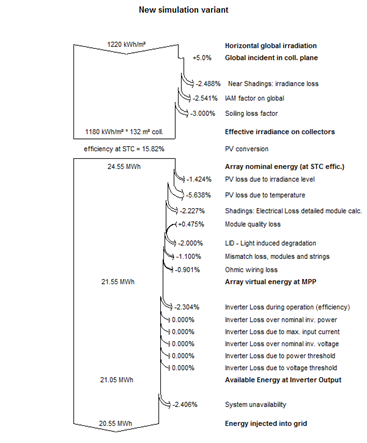
▲Figure 1
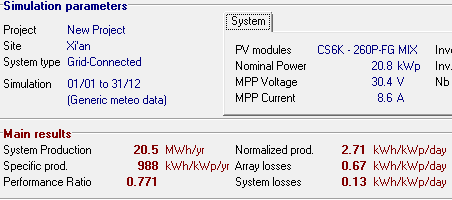
▲Figure 2
▼Table 1 Loss coefficient and PR calculation
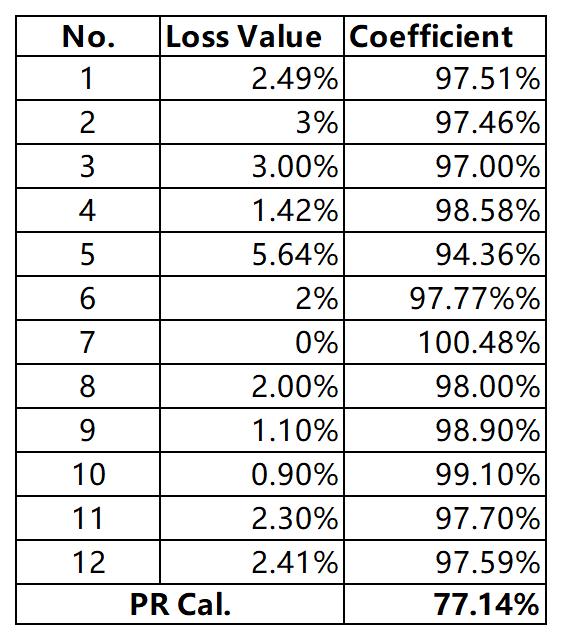
2. What is the reason why SolarGis meteorology data cannot be imported into PVsyst?
[Teacher Chen]: After obtaining the average meteorological data for each month from Soalrgis over the past several years, you need to place the meteorology file on your computer desktop; otherwise, it cannot be imported into PVsyst.
As shown in Figure 3, there are two types of SolarGis meteorology data import formats, identified by color. Green represents hourly meteorology data, while orange-yellow represents monthly meteorology data. When importing, simply select the corresponding format.
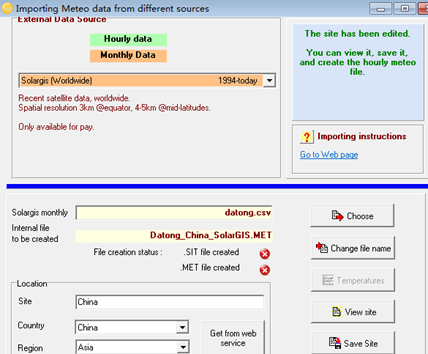
▲Figure 3
3. The optimal tilt set in Settings differs from the optimal tilt in actual arrangement. Does it affect the final Production? Should the angles of the two remain consistent? For example, if the optimal tilt in Drientation is set to 25°, but in actual arrangement, the optimal tilt in Near Shading is set to 20°, will this affect the final Production when calculating?
[Teacher Yang]: The System will give you a Prompt, asking you to adjust the Angle in the Orientation to match that in the Near Shading. Otherwise, the Near Shading button will be red and simulation cannot be performed.
4. Is the Meteonorm7 data integrated by PVsyst the average monthly data over 20 years, or has more detailed data been imported into the backend?
[Teacher Chen]: The Meteonorm data integrated into PVsyst represents statistical averages over many years. However, it is important to note that the time span of the data imported internally is in months, not hours. Please refer to Figures 4 and 5. Figure 4 shows the Meteonorm data imported internally into PVsyst, with a Time step of 1 month, while Figure 5 displays meteorological data exported from Meteonorm, with a Time step of 1 hour
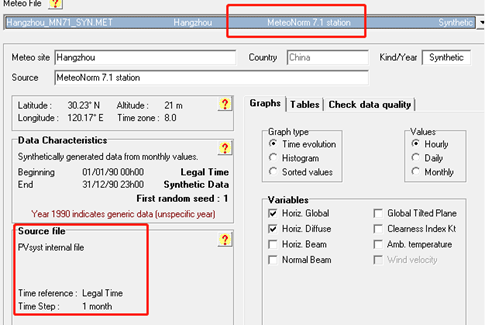
▲Figure 4
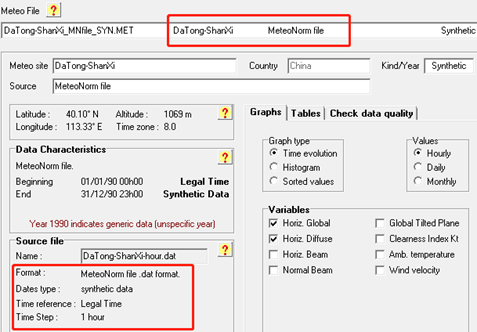
▲Figure 5
5. In the system settings interface, I want to adjust the number of strings to 21 components per string, but the open-circuit voltage of the strings at low temperatures exceeds the maximum voltage allowed by the inverter. What should I do?
[Teacher Chen]: By default, the minimum temperature setting for PVsyst is -10℃, which may cause the issue described in the question for some projects. Therefore, it is necessary to set it according to the actual minimum temperature in the local area (as shown in Figure 6). If the actual ambient temperature is higher than -10℃, it can be set to 21 modules in a string.
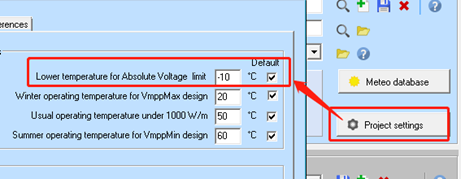
▲Figure 6
6. What do the values of 34.03MWh and 33.49MWh in the Pvsyst loss diagram represent?
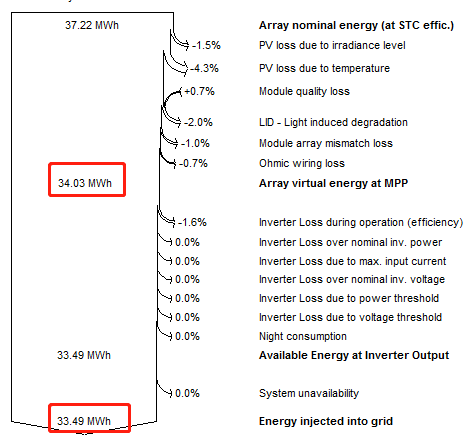
▲Figure 7
[Teacher Chen]: The value 34.03 in Figure 7 represents the EArrMPP, which is the maximum energy output of the photovoltaic array after deducting all array losses (including shading loss, dust loss, and IAM loss) under actual operating conditions (Array MPP energy after all array losses). If there is no overload loss (EArrMPP - Earray), then EArrMPP should be equal to EArray (i.e., the actual energy available to the inverter's DC side from the photovoltaic array). The value 33.49 represents the annual on-grid energy of the project.
Tip: Interested readers can refer to past articles to search for issues encountered while using PVsyst.
Article Comments(0)